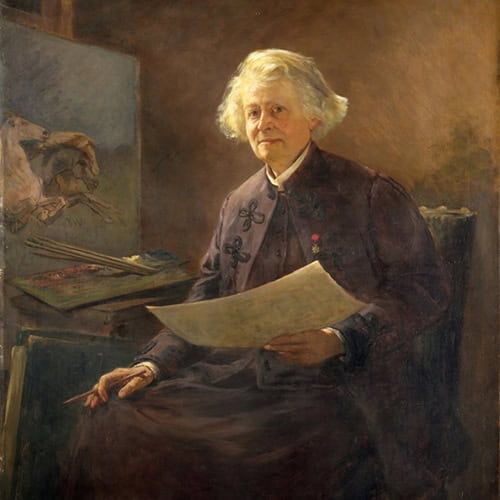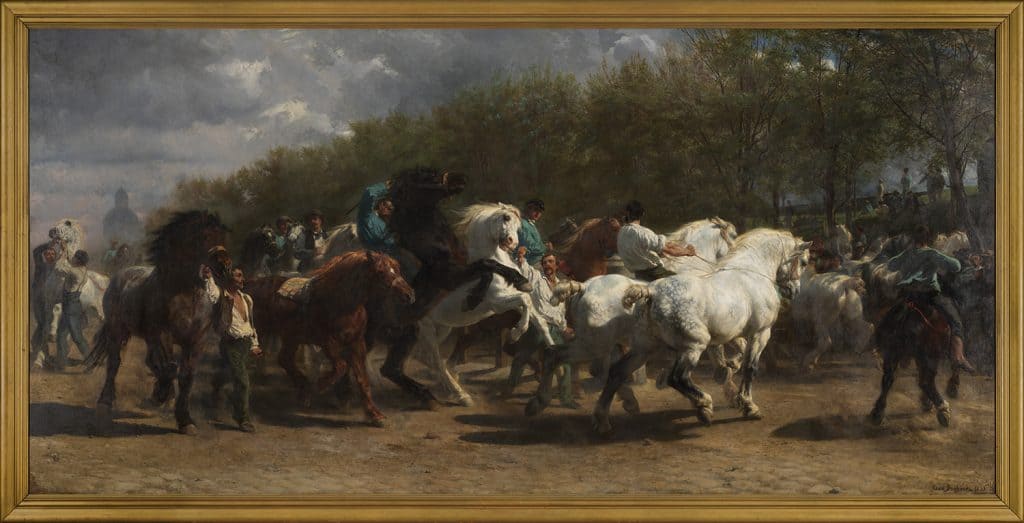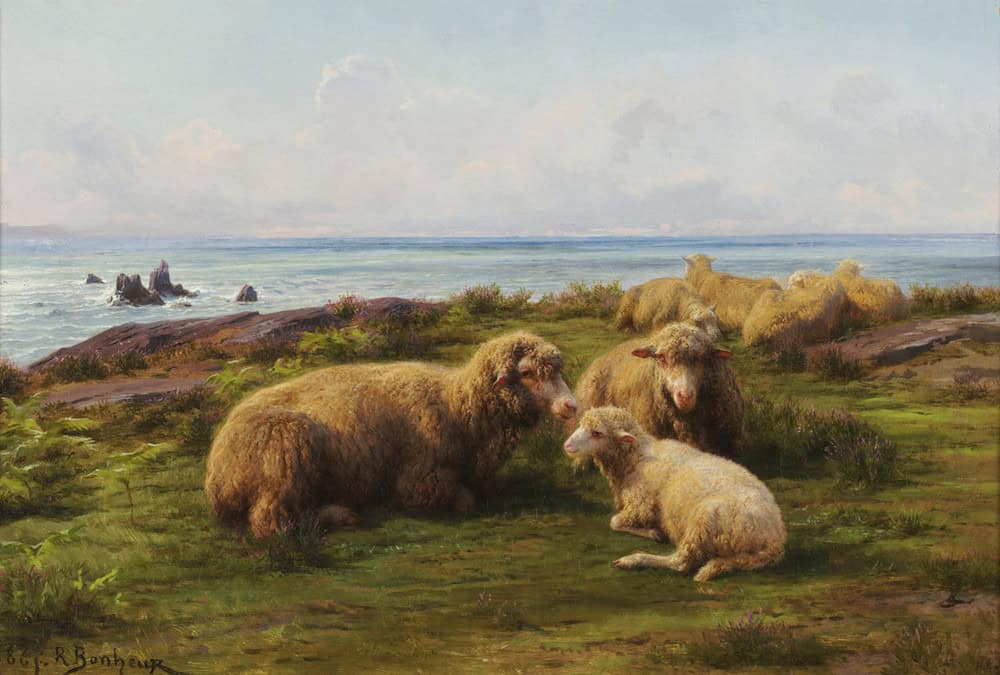Rose Bonheur was a feminist icon that served as a role model for future generations of women artists. Being one of the important, most widely considered, female painters during her time, Bonheur felt the call of the wild and dedicated her creative endeavors to the study and creation of visual works involving animals. Diligently studying animal anatomy, she wanted to push past the superficial and instead dig deeper into the holistic discipline to learn what it means to be alive; how does the body move? How does that effect the way we feel? How are we limited by the flesh, but conversely capable of the infinite? Bonheur was deeply devoted to understanding the inner workings of creatures and their place, just as much as she was devoted to understanding the deeper workings of what makes living things alive.

From a young age, Bonheur was encouraged to follow her artistic passions and spent her youth painting, studying her animal subjects in fields and abattoirs. Both Bonheur’s parents belonged to a niche Christian-Socialist sect named Saint-Simonianism, which advocated for the equality of women and workers and Bonheur’s father, an impoverished artist who worked with Landscapes, insisted that she pursue her dreams and career as an artist to establish her own independence
Being a lover of animals, she took to her subject matter with great speed and was sketching cows and other farm animals long before she could even read. This love of animals, nurtured by her father, happened to coincidentally become the style of the times. “With the rise of the bourgeoisie and the fall of the cultivated aristocracy, smaller paintings, generally of every-day subjects, rather than grandiose mythological or religious scenes, were much in demand,” wrote Nochlin, author of Why Have There Been No Great Women Artists?

Since there was already an initial interest of the subject matter on her end, by the time other artists looking for job security in the market, Bonheur was already a master of the style and technique and was soon renown for her painting skills, reaching a realistic level of fame by her early 30’s for her painting The Horse Fair, 1852-1855. After this work caught the attention of the art world and drew her acclaim, Bonheur would later meet with royalty like Queen Victoria, and would eventually become the first woman to be award Frances highest order, the Legion of Honor. All this meant that Bonheur achieved her lifelong dream of supporting herself and the women she loved financially. Bonheur lived with her partner Nathalie Micas for more than 40 years, up until the day Micas died. After the death of Micas, Bonheur eventually began a relationship with American painter Anna Elizabeth Klumpke.
Bonheur was openly lesbian, not letting the cultural norms of the time influence such an inherent part of who she was. She broke through countless boundaries by choosing to wear trousers, shirts, and ties, allowing her to express her gender openly and as freely as she pleased while also finding comfort when going to the sheep and cattle markets to study the animals as references for her work. Refusing to conform to societies construction of the gender binary, Bonheur lived openly as a gay woman, broadcasting her expression as a form of protest, never explicitly stating she was lesbian but instead wore it proudly on her shoulders.

Rosa Bonheur passed on May 25th, 1899 at 77 years old. She was buried with Nathalie Micas, her lifelong companion at the Pere Lachaise Cemetery in Paris where she was eventually followed by Anna Elizabeth Klumpke, who was buried in the same cemetery.
Continue reading about gender equality art.


